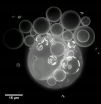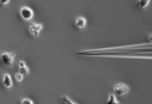(Press-News.org) BLOOMINGTON, Ind. -- A new study by researchers at The Kinsey Institute and the Fred Hutchinson Cancer Research Center has found that the timeless, multicultural tradition of grandmothering might have an unexpected benefit: helping some women temper their hot flashes and night sweats during menopause.
The researchers, two clinicians and a bioanthropologist, examined how close relationships can help women in midlife with this inevitable change -- with the clinicians looking for therapeutic benefits that might help patients deal with this unpredictable, poorly understood transition, and the bioanthropologist predicting an evolutionary connection. Their study, which focused on the relationship between mid-life women and young children, found that women who underwent rapid menopause, caused by the surgical removal of ovaries, had fewer hot flashes and night sweats when young children lived in their homes.
The study was published in Menopause: the Journal of the North American Menopause Society. Study authors are Tierney Lorenz, postdoctoral fellow at The Kinsey Institute at Indiana University Bloomington, Bonnie A McGregor, researcher at University of Washington's Hutchinson Cancer Research Center, and Virginia J. Vitzthum, professor of anthropology and senior research scientist at The Kinsey Institute.
The study involved 117 participants in the study; 69 women were menopausal or postmenopausal at the time of their surgery, with 29 of them having at least one child at home, and 48 women were premenopausal, with 28 of them having at least one child at home. Researchers measured hot flashes and night sweats just before the surgery and then again at two months, six months and 12 months post-surgery.
"These are intriguing findings," Lorenz said. "For women who were menopausal when our study began, those with young children at home actually showed more symptoms of hot flashes. But the women who underwent rapid menopause because of the surgical removal of their ovaries showed a dramatic reduction of symptoms."
The process of menopause, when ovaries no longer produce eggs and menstruation stops, varies widely. Some women have almost no bothersome symptoms, while some women experience almost crippling symptoms. Lorenz said a small subset of women experience very severe effects longer than would be expected.
The numerous studies on menopause have generated little consensus, Lorenz said, leaving women with a wide range of questionable treatments, such as supplements, hormonal treatments and even hot yoga. This new study is one of the first involving social interaction and menopause symptoms to control for the age of the women and also for the type of relationship -- only relationships with young children were considered.
The study got its start with Vitzthum's interest in the evolutionary role of social structures -- grandmothering in this case. The institution of grandmothering can be seen across cultures, but is it really necessary for the survival of the species? Is there an immediate benefit to the women? Is it a coincidence that women often undergo the physiological change of menopause at an age when they might have young grandchildren on hand?
Lorenz cautioned that the findings of their study cannot be generalized to all women, particularly since menopause affects women so differently. But they point to a need to examine the hormone oxytocin more carefully because of its possible role in the results. Oxytocin is associated with nurturing care and a wide range of effects across the body, including interactions involved in regulating body temperature. It also can affect mood and sleeping patterns, which can be disturbed during menopause. She also thinks it is significant that the benefits only involved young children.
"The fact the effects observed were limited to only women with children younger than 13 years suggests that parity was not sufficient to produce changes in flashes and points instead to the increased nurturance needs of young children," the authors wrote in the journal article. "Presence of young children at home may moderate development of hot flashes during the menopausal transition."
INFORMATION:
The research was supported by the Fred Hutchinson Cancer Research Center.
To speak Lorenz or for more information, contact Jennifer Bass at 812-855-7686 or jbass@indiana.edu.
Study: Menopausal symptoms may be lessened with young children in the house
2014-10-27
ELSE PRESS RELEASES FROM THIS DATE:
Breakthrough in molecular electronics paves the way for DNA-based computer circuits in the future
2014-10-27
In a paper published today in Nature Nanotechnology, an international group of scientists announced the most significant breakthrough in a decade toward developing DNA-based electrical circuits.
The central technological revolution of the 20th century was the development of computers, leading to the communication and Internet era. The main measure of this evolution is miniaturization: making our machines smaller. A computer with the memory of the average laptop today was the size of a tennis court in the 1970s. Yet while scientists made great strides in reducing of the ...
Cell membranes self-assemble
2014-10-27
A self-driven reaction can assemble phospholipid membranes like those that enclose cells, a team of chemists at the University of California, San Diego, reports in Angewandte Chemie.
All living cells use membranes to define physical boundaries and control the movement of biomolecules, and movement of molecules through membranes is a primary means of sending signals to and from cells.
Neal Devaraj, a chemistry and biochemistry professor at UC San Diego, leads a research team that develops and explores new reactions that can trigger the formation of membranes, particularly ...
First time-lapse images of exploding fireball from a 'nova' star
2014-10-27
Astronomers at the University of Sydney are part of a team that has taken images of the thermonuclear fireball from a 'nova star' for the first time tracking the explosion as it expands.
The research is published in the journal Nature today.
The eruption occurred last year in the constellation of Delphinus (the Dolphin).
Professor Peter Tuthill, from the University's Sydney Institute for Astronomy and co-author on the paper says astronomers are excited about the achievement:
"Although novae often play second fiddle in the popular imagination to their more famous ...
Tremendously bright pulsar may be 1 of many
2014-10-27
Recently, a team of astronomers reported discovering a pulsating star that appears to shine with the energy of 10 million suns. The find, which was announced in Nature, is the brightest pulsar – a type of rotating neutron star that emits a bright beam of energy that regularly sweeps past Earth like a lighthouse beam – ever seen. But what are the odds finding another one?
According to one of the paper's authors, chances are good now that they know what to look for.
Professor Deepto Chakrabarty of the Kavli Institute for Astrophysics and Space Research at ...
Emergent behavior lets bubbles 'sense' environment
2014-10-27
VIDEO:
A collection of artificial lipid bubbles cycle through changes in their membranes as the surrounding environment changes. As the osmotic potential changes, different lipids in the membranes form patchy domains...
Click here for more information.
Tiny, soapy bubbles can reorganize their membranes to let material flow in and out in response to the surrounding environment, according to new work carried out in an international collaboration by biomedical engineers at the ...
One drop will do: UBC researchers develop simple new test for vitamin B12 deficiency
2014-10-27
Researchers at the University of British Columbia have developed a novel method to test for vitamin B12 deficiency that is sensitive enough to work on anyone, including newborn babies and large swaths of the general population.
Vitamin B12 deficiency can be tested with a single drop of blood collected from a finger prick, then blotted and dried overnight on a card consisting of filter paper. The UBC study made dried blood spot card analysis sensitive enough to measure the amount of methylmalonic acid (MMA), an indicator of a person's B12 level.
"This minimally invasive ...
International research group publishes updated criteria for diagnosing multiple myeloma
2014-10-27
ROCHESTER, Minn. –The International Myeloma Working Group (IMWG) today announced that it has updated the criteria for diagnosing multiple myeloma. A paper outlining the new criteria was published in the journal Lancet Oncology. Multiple myeloma is a blood cancer that forms in a type of white blood cell called a plasma cell.
"Our group, which includes more than 180 myeloma researchers worldwide, has updated the definition of multiple myeloma for diagnostic purposes to include validated biomarkers in addition to the current clinical symptoms used for diagnosis which ...
Diabetes patients report better outcomes with improved physician accessibility
2014-10-27
LOS ANGELES — A new model of delivering primary care studied by Keck Medicine of the University of Southern California (USC) researchers has the potential to improve the health of patients with type 2 diabetes.
The model encourages doctors to be more of a "medical home" for their patients by being accessible to patients in person and by phone, developing good ongoing relationships with their patients, and being more proactive in helping coordinate care for patients with difficult health problems.
Gregory Stevens, Ph.D., associate professor of family medicine ...
Clinical results indicate vaccine candidate highly efficacious against bacterial diarrhea
2014-10-27
Washington, DC, October 27, 2014—New results from a safety and immunogenicity study, which included a challenge phase to test efficacy, indicate that a live attenuated enterotoxigenic Escherichia coli (ETEC) vaccine candidate, given in combination with a novel adjuvant, provided significant protection against disease. This represents the first efficacy data for this vaccine/adjuvant combination, which was 58.5 percent efficacious in protecting against diarrhea of any severity using a highly rigorous ETEC human challenge model. The vaccine/adjuvant combination was ...
How cells know which way to go
2014-10-27
VIDEO:
In this video, lab-grown human leukemia cells move toward a pipette tip holding an attractive chemical.
Click here for more information.
Amoebas aren't the only cells that crawl: Movement is crucial to development, wound healing and immune response in animals, not to mention cancer metastasis. In two new studies from Johns Hopkins, researchers answer long-standing questions about how complex cells sense the chemical trails that show them where to go — and the ...



